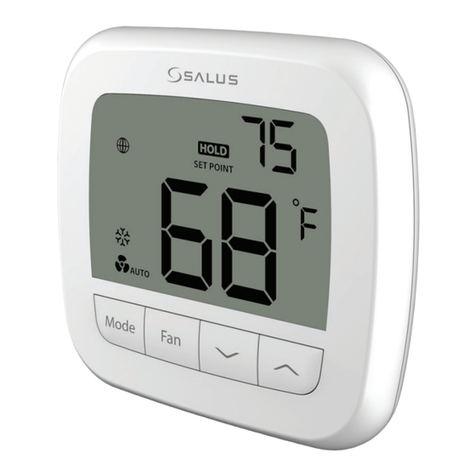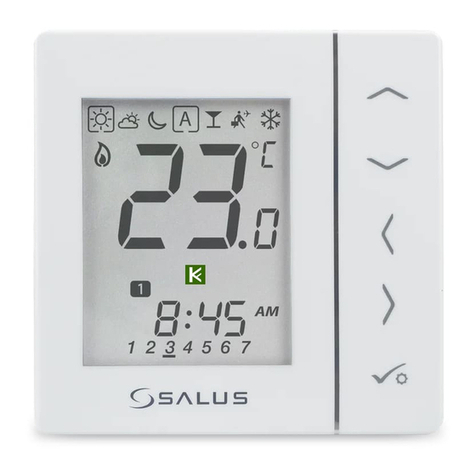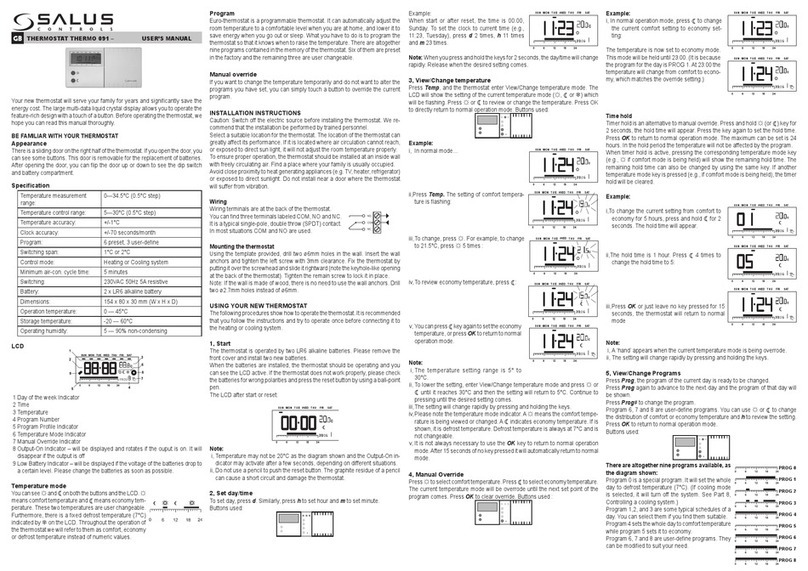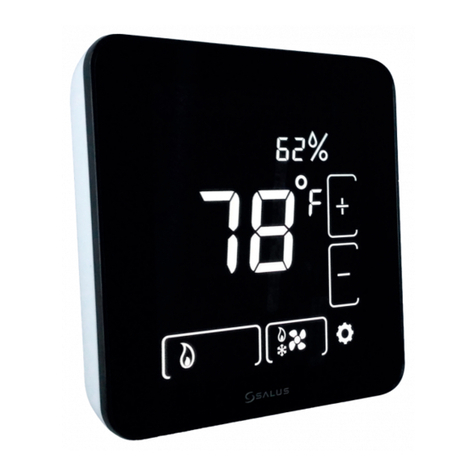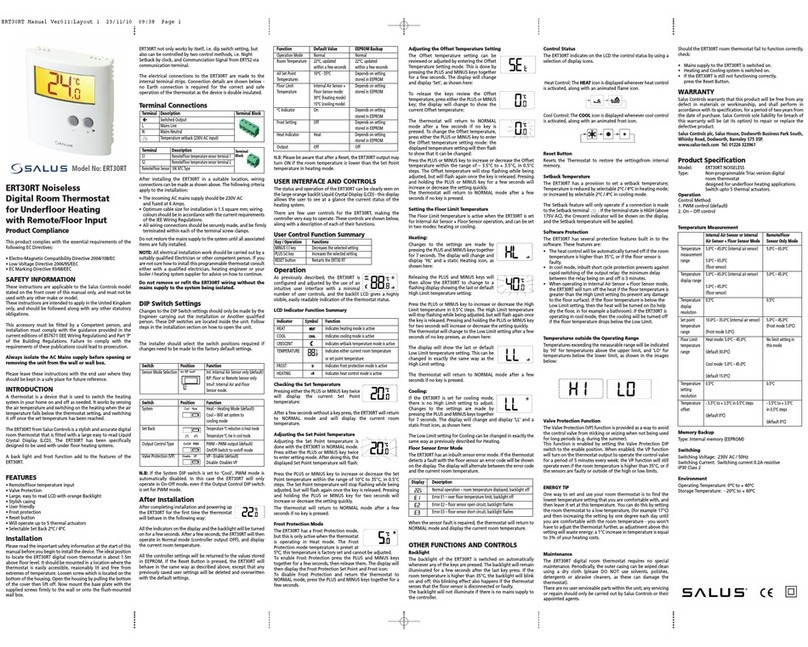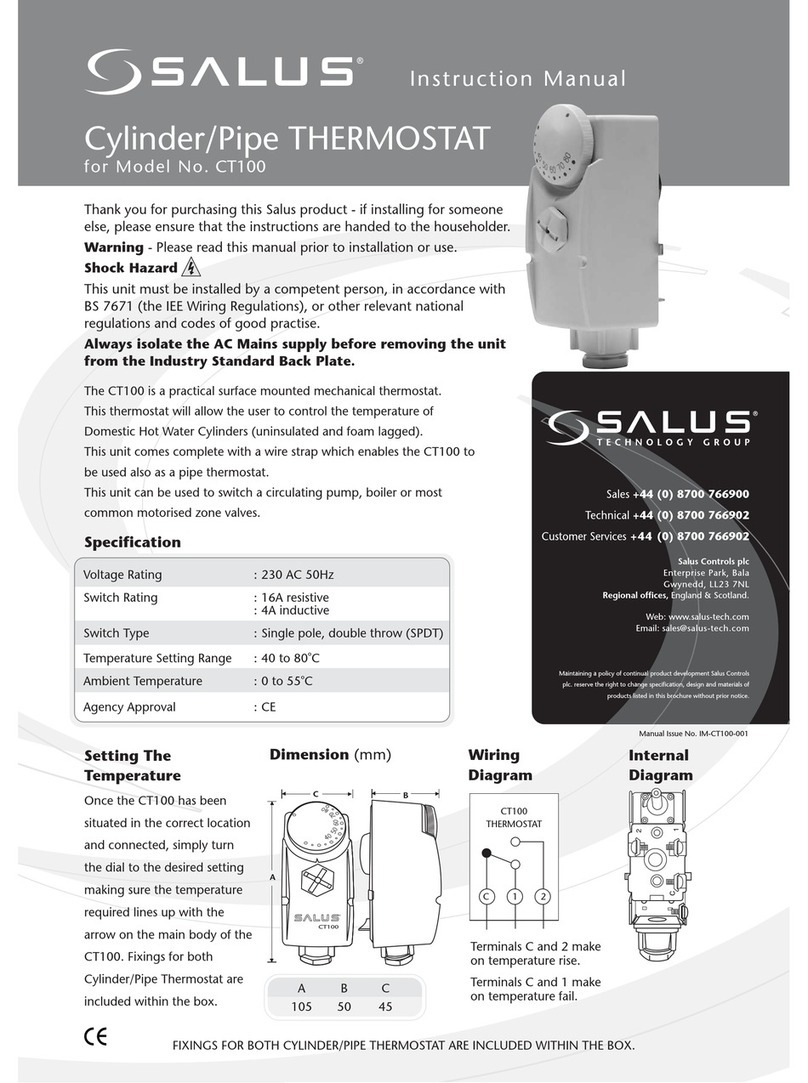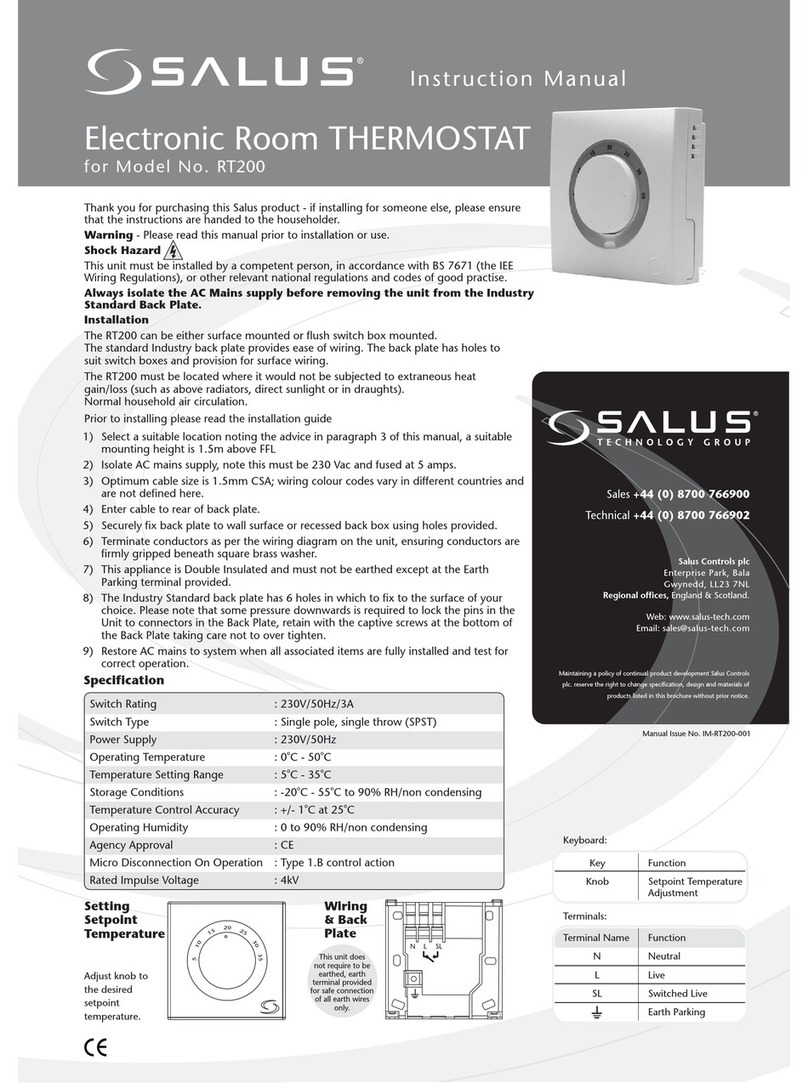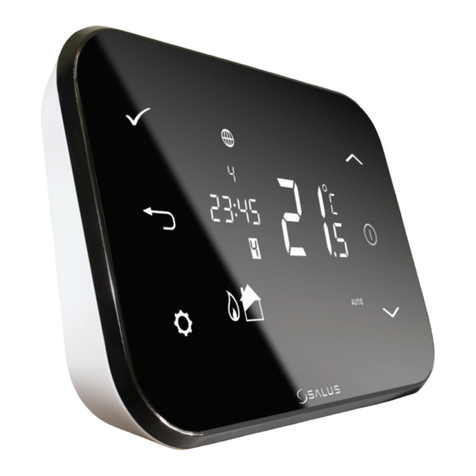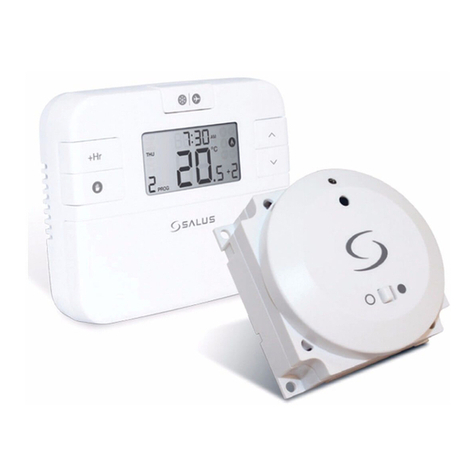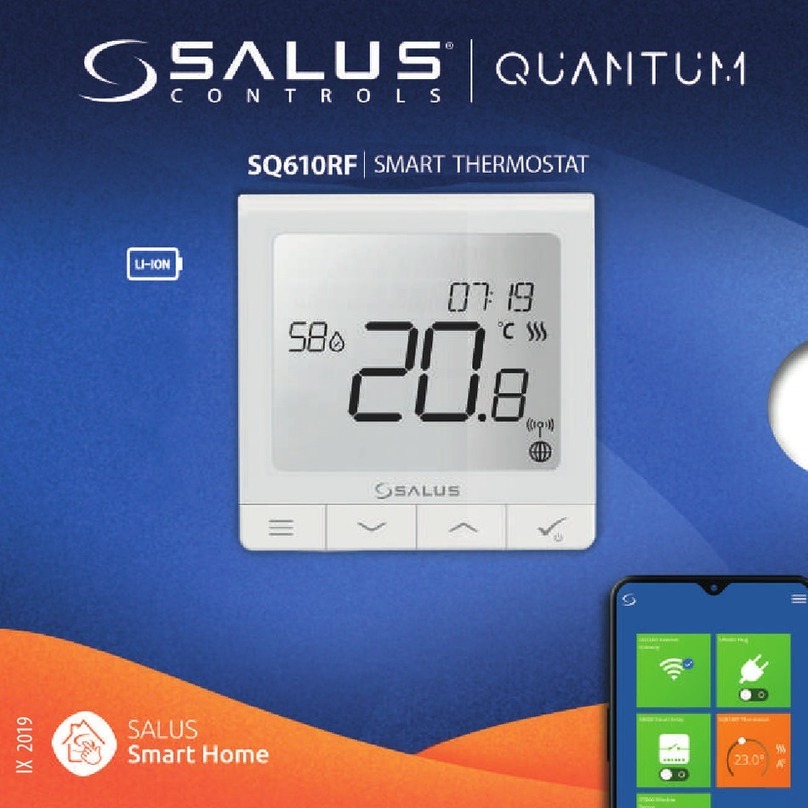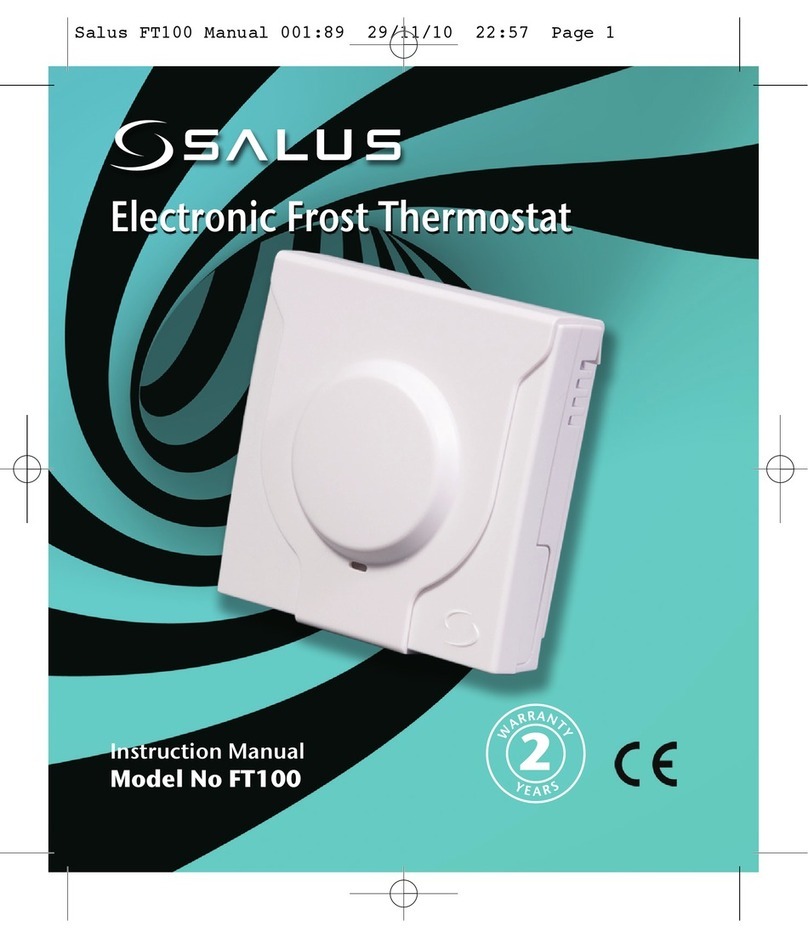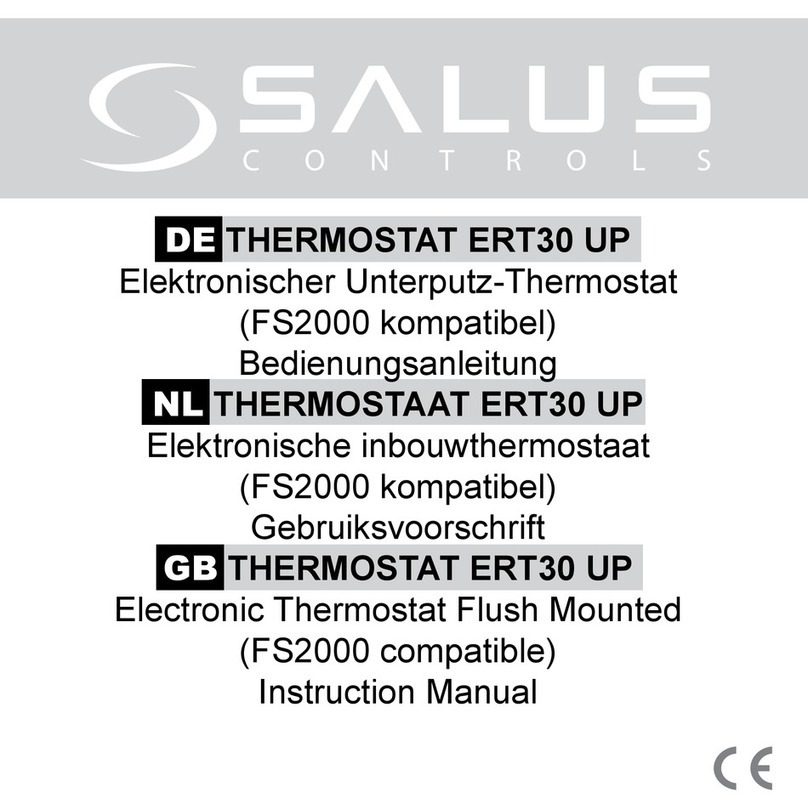7
GB
TESTING THE RF TRANSMISSION
It is important to site the Receiver and Control Centre in locations
where the RF signal cannot be interrupted. The receiving range
between Control Centre and Receiver is 60M in open area. Many
factors can affect the RF transmission, shortening the operating
distance e.g. shielding by thick walls, foil back plasterboard, metal
objects such as ling cabinets, general RF interference etc, However,
the range is enough for most household applications.
It is advisable to test the RF transmission from the intended Control
Centre location to the Receiver location before xing the Control
Centre to the wall.
1. Press UP button until the set-point temperature is higher than room
temperature by a few degrees.
2. Wait for a few seconds. The animated fun (heat call indicator) should
appear on the bottom right of the LCD on the control centre.
3. Check the green LED on the receiver unit. It should be
illuminated.
4. Press Down button to adjust the set-point temperature to be lower
than room temperature. Wait for a few seconds. The animated ame
(heat call indicator) should disappear and the green LED should
switch off.
5. If at step 3 the LED is not illuminated, press RESET and try to place
the Control Centre closer to the Receiver, repeating steps 1 to 4.
6. Alternatively you can try and alter the address code following the
‘RF Address Code Setting (page 5) of this manual, then repeat
steps 1 to 3.
Note that the RESET button on the Control Centre should be pressed
after altering the add ress code.






